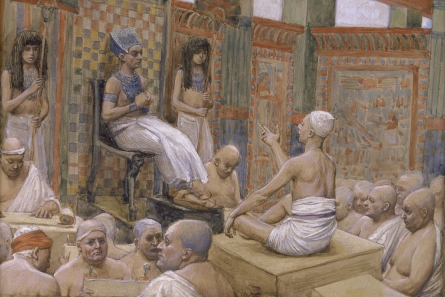What is a mission statement? It’s one of those things that seems very important to get right, but is terribly difficult to write well. Expert consultants will happily come in and charge you thousands of dollars to perfect a mission statement. But first you need to answer the question, “Why?” What is the purpose of a mission statement?
We can start off by looking at how a mission statement is used. The mission statement provides a unified message in external communications. It often shows up on brochures and websites. Businesses broadcast them to potential customers to convince them to buy their products by making a connection between the company’s and the customer’s shared values.
Build the best product, cause no unnecessary harm, use business to inspire and implement solutions to the environmental crisis.
Patagonia Mission Statement
Companies also use the mission statement internally to inspire their employees. The mission statement can set the tone for operations and inform the relationship between employees and customers.
Our Mission: to provide outstanding service every day, one customer at a time.
Nordstrom
A good mission statement should bring to light the companies core activities… answering the question, “why does this company exist?”
Disconnected from reality.
The problem with mission statements is that sometimes they are just empty words that never translate into meaningful action. The slogan on the letterhead changes. Words are shifted around a bit to make them sound fresh or give them more verve, but the people in management don’t change, their management style doesn’t change, and the forms that you have to fill out don’t change. Your products are still manufactured in sweatshops in Southeast Asia.
I’m sure I’m not alone in being a bit jaded by the fact that mission statements are often little more than window dressing. “Dilbert” has a following for precisely this reason. Yet consultants continue to peddle the mission statement as a panacea for whatever corporate woes are tormenting the board of directors.
Of course this is as true in the non-profit and church world as in the world of business. An organization that is struggling for direction will invest large amounts of resources into redoing the mission statement, but will often discover that changes are not as easy to make in the real world as they are in Microsoft Word.
Getting to the essence.
Scripture says, “Without a vision, the people lose restraint” (Proverbs 29:18) A more dramatic translation concludes, “…the people perish.” If you don’t know what you’re doing, you’ll do anything you feel like doing or, perhaps worse, nothing at all. Leaders are responsible for discovering and communicating the vision that points an organization in the right direction.
A great biblical image of a mission statement that drove huge numbers of people to great concerted effort over a long period of time time is found in the story of Joseph. After doing some hard time in prison, Joseph goes to Pharoah to explain a terrifying dream. After explaining the prophetic message in the dream, Joseph goes further. He gives Pharoah the mission statement.
“They should collect all the food of these coming good years, gathering the grain under Pharaoh’s authority, for food in the cities, and they should guard it. This food will serve as a reserve for the country against the seven years of famine that will occur in the land of Egypt, so that the land may not perish in the famine.”
Genesis 41:35-36
Now this doesn’t have the pithy wordsmithing that most modern mission statements do, but it had the effect that most modern mission statements don’t. It stirred Pharoah to action, the whole Egyptian people to action. You might know the rest of the story… Pharoah put Joseph in charge of all the resources in Egypt to carry out that mission.
So if you’re working on a mission statement, think first about how you would communicate the problem that you’re trying to solve and the solution that your organization will implement. Get as simple as you can. Your mission is the solution to some big and pressing problem.
What does this have to do with fundraising in the Church?
No one is forced to give to the Church. They choose to give. The reason that they choose to give is because they believe that their gift will be part of a good solution to a problem that is big and hairy. Knowing the problem that is the genesis of your mission and how your mission solves that problem is essential if you want to communicate your mission to a potential donor.
Joseph had some divine assistance in presenting his fundraising case. The Pharoah was terrified by a very vivid dream that illustrated the disaster that was on the horizon. When Joseph interpreted the dream and provided a clearly thought out plan of what to do about it, Pharoah gave him the second highest role of authority in Egypt and the resources to build a massive grain storage and distribution organization. Talk about a successful major gift ask!
We have a mission that is divine.
In the Church, we have already been given our mission. “Go therefore and make disciples of all the nations, baptizing them in the name of the Father, and Son, and the Holy Spirit, and teaching them to do all I have commanded you to do.”
What is the problem that this mission addresses? How does the mission of your organization relate to this divine mission? Does your mission statement clearly communicate how your organization provides the solution to these problems?
These are big questions. Ask the Lord for His guidance as you draft your mission statement. At the end of the day, you want to accomplish His mission, not one you dreamed up on your own.
Would you like to learn more about raising money for Church and Ministry? Check out Letters From The Almoner, now available on Amazon.com. Image courtesy of Wikiart.com, via Public Domain, no rights reserved.









